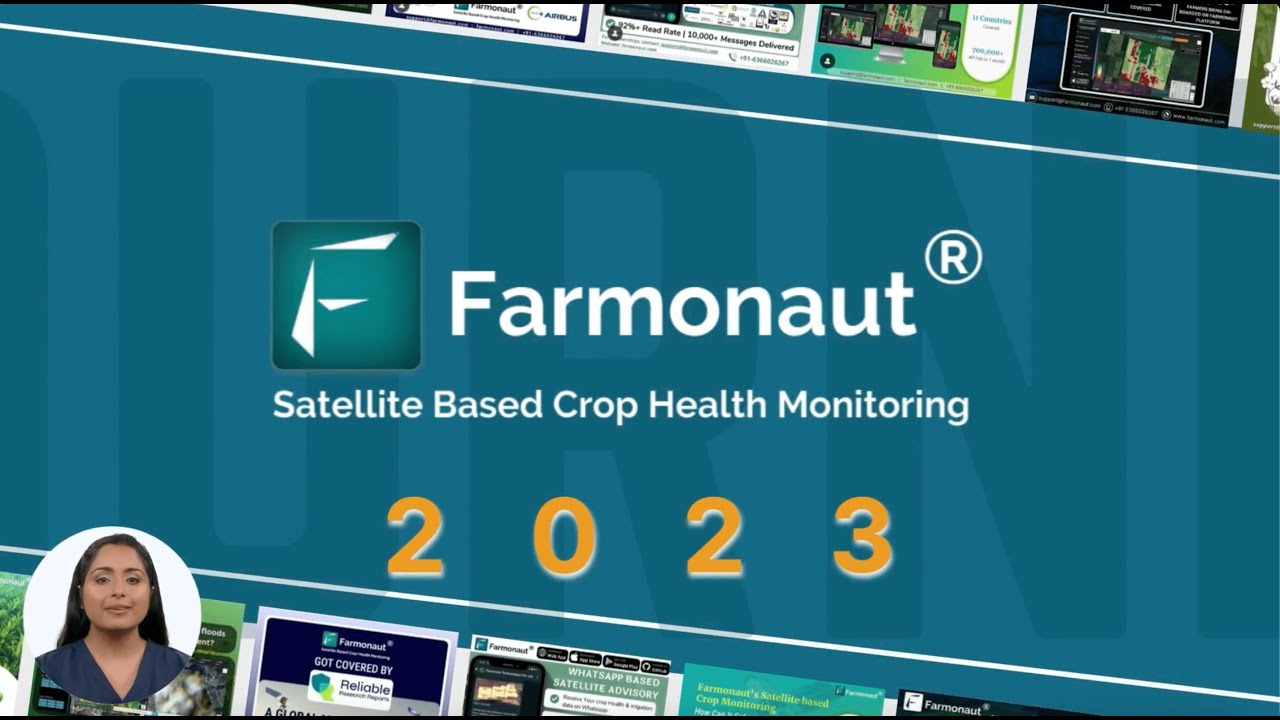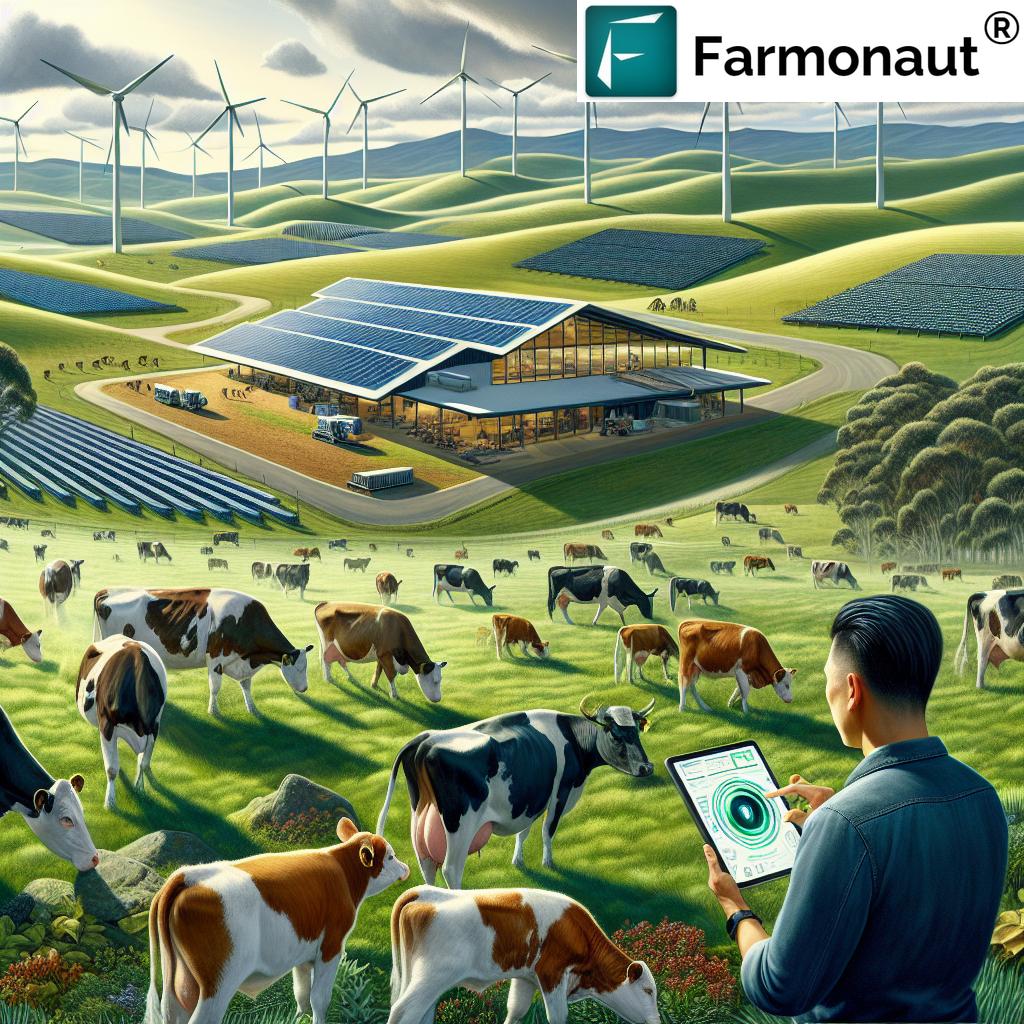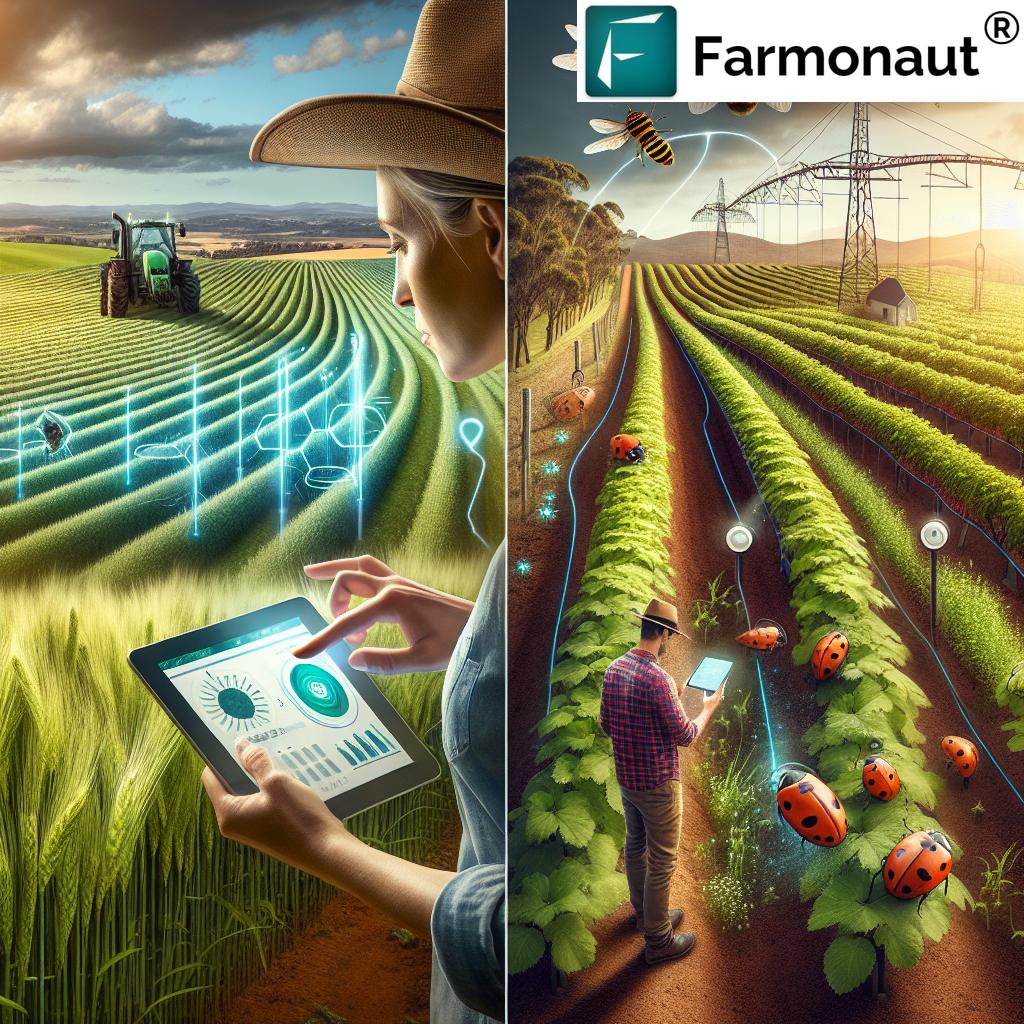Revolutionizing Australian Grain Production: Sustainable Practices and Industry Standards for a Thriving Agricultural Future
“Australian grain industry standards impact over 44 million hectares of cropland nationwide.”

In the vast expanse of Australia’s agricultural landscape, we find ourselves at a pivotal moment in the evolution of grain production. As we navigate the challenges of climate change, resource scarcity, and market volatility, the need for sustainable practices and robust industry standards has never been more critical. In this comprehensive review, we’ll explore how the Australian grain industry is adapting to these challenges, embracing innovation, and setting new benchmarks for sustainability and profitability.
The Changing Face of Australian Grain Production
The Australian grain industry is a cornerstone of our agricultural sector, contributing significantly to both domestic food security and export markets. However, the landscape of grain production is rapidly changing, driven by a combination of environmental pressures, technological advancements, and shifting consumer demands. Let’s delve into the key factors shaping the future of our grain industry:
- Sustainability imperative: With growing concerns about climate change and environmental degradation, sustainable grain production has become a top priority for growers, policymakers, and consumers alike.
- Technological revolution: Precision agriculture technology is transforming how we cultivate crops, offering unprecedented levels of efficiency and resource management.
- Market dynamics: Evolving global markets and changing consumer preferences are driving the need for new grain varieties and quality standards.
- Policy landscape: Agricultural policy developments at both state and federal levels are shaping the regulatory environment for grain production.
As we address these challenges, innovative solutions like those offered by Farmonaut are playing a crucial role in empowering farmers with data-driven insights. Through its advanced satellite-based farm management platform, Farmonaut is helping growers optimize their operations and embrace sustainable practices.
Sustainable Grain Production: A New Paradigm
Sustainable grain production is no longer just an environmentally conscious choice; it’s becoming an economic necessity. As we strive to meet the demands of a growing population while preserving our natural resources, innovative crop management techniques are taking center stage.
Let’s explore some of the key practices that are revolutionizing sustainable grain production in Australia:
- Conservation tillage: By minimizing soil disturbance, we’re reducing erosion, improving soil health, and enhancing water retention.
- Crop rotation: Diversifying crops helps break pest cycles, improves soil fertility, and reduces the need for synthetic inputs.
- Precision nutrient management: Using advanced soil testing and variable-rate technology, we’re optimizing fertilizer application to reduce waste and environmental impact.
- Water-efficient irrigation: Implementing drip irrigation and soil moisture sensors helps conserve water while maintaining optimal crop health.
- Integrated pest management: Combining biological controls, crop diversity, and targeted pesticide use minimizes chemical inputs and protects beneficial organisms.
These practices not only contribute to environmental sustainability but also help growers maintain profitability in the face of rising input costs and unpredictable weather patterns.
The Role of Precision Agriculture Technology
“Precision agriculture techniques can reduce water usage in grain production by up to 30%.”
Precision agriculture technology is revolutionizing the way we approach grain production. By leveraging data from satellites, drones, and on-ground sensors, farmers can make more informed decisions about every aspect of their operations. Here’s how precision agriculture is transforming sustainable grain production:
- Satellite imagery and remote sensing: Platforms like Farmonaut use multispectral satellite data to provide real-time insights into crop health, allowing for early detection of issues and targeted interventions.
- Variable-rate technology: By applying inputs like seeds, fertilizers, and water at variable rates across fields, we can optimize resource use and reduce waste.
- Yield mapping: Advanced harvest equipment can create detailed yield maps, helping farmers identify areas of high and low productivity within their fields.
- Weather monitoring and forecasting: Accurate, localized weather data helps farmers make timely decisions about planting, spraying, and harvesting.
- Farm management software: Integrated platforms like Farmonaut’s Jeevn AI advisory system help farmers analyze data from multiple sources and generate actionable insights.
Explore Farmonaut’s API for advanced satellite and weather data integration

Evolving Industry Standards and Quality Assessment
As the Australian grain industry adapts to new challenges and opportunities, the standards that govern production, classification, and quality assessment are evolving. These standards play a crucial role in maintaining market access, ensuring food safety, and driving innovation in the sector.
Key areas of focus in the latest industry review include:
- Grain classification systems: Refining classification criteria to better reflect the diverse end-uses of Australian grains and meet changing market demands.
- Quality assessment methods: Implementing advanced technologies for more accurate and efficient grain quality testing, including protein content, moisture levels, and contaminant detection.
- Sustainability certifications: Developing and promoting certification schemes that recognize sustainable production practices and open up premium market opportunities.
- Food safety standards: Enhancing traceability and quality control measures to ensure Australian grains meet the highest food safety standards in both domestic and export markets.
- Varietal development: Encouraging the breeding and adoption of grain varieties that offer improved yield, disease resistance, and quality characteristics while adapting to changing climate conditions.
These evolving standards are essential for maintaining Australia’s competitive edge in the global grain market and ensuring the long-term sustainability of our industry.
Collaboration and Innovation: Driving Industry Progress
The future of Australian grain production hinges on collaboration among stakeholders and a commitment to ongoing innovation. We’re seeing unprecedented levels of cooperation between growers, researchers, industry bodies, and technology providers to address the challenges facing our sector.
Key collaborative initiatives include:
- Research partnerships: Joint ventures between universities, government agencies, and private companies to develop new grain varieties and sustainable farming practices.
- Grower networks: Farmer-led groups sharing knowledge and experiences with sustainable production methods and new technologies.
- Industry-wide data sharing: Initiatives to aggregate and analyze production data across regions, helping to identify trends and best practices.
- Cross-sector collaboration: Partnerships between the grain industry and other sectors, such as renewable energy and carbon sequestration, to explore new revenue streams for farmers.
- International cooperation: Engaging with global partners to share research, align standards, and address common challenges in sustainable grain production.
Innovation is at the heart of these collaborative efforts, with a focus on developing solutions that are both environmentally sustainable and economically viable for growers.
Access Farmonaut’s API Developer Docs for innovative agtech solutions
The Economic Imperative: Balancing Sustainability and Profitability
While the push for sustainable grain production is driven by environmental concerns, it’s equally important to ensure that these practices are economically viable for growers. The industry is working to demonstrate that sustainability and profitability can go hand in hand.
Strategies for maintaining economic viability include:
- Cost reduction through efficiency: Precision agriculture technologies and sustainable practices often lead to reduced input costs over time.
- Premium market access: Sustainably produced grains can command higher prices in certain markets, offsetting potential yield trade-offs.
- Diversification of income streams: Exploring opportunities in carbon farming, renewable energy generation on farmland, and ecosystem services payments.
- Government incentives: Advocating for policy measures that support the transition to sustainable practices, such as grants, tax incentives, and low-interest loans.
- Risk management tools: Developing innovative insurance and financial products that help growers manage the risks associated with adopting new practices.
By focusing on these strategies, we can ensure that sustainable grain production remains an attractive and viable option for Australian growers.
Adapting to Agricultural Policy Developments
The regulatory landscape for grain production in Australia is continually evolving, with new policies and regulations aimed at promoting sustainability, food safety, and market competitiveness. Staying informed and adapting to these policy developments is crucial for growers and industry stakeholders.
Key policy areas to watch include:
- Environmental regulations: New rules around water use, land clearing, and chemical applications that impact grain production practices.
- Carbon pricing and emissions reduction: Policies that may create new opportunities or obligations for growers in relation to carbon sequestration and emissions reduction.
- Biosecurity measures: Evolving regulations to protect Australian grain from pests and diseases, impacting both production practices and trade.
- Trade agreements: New international trade deals that may open up markets or introduce new compliance requirements for Australian grain exports.
- Research and development funding: Changes to government support for agricultural R&D that could impact the development of new technologies and practices.
By staying abreast of these policy developments and actively engaging in industry consultations, growers can ensure they’re well-positioned to adapt and thrive in the changing regulatory environment.
The Role of Technology in Sustainable Grain Production
As we continue to push the boundaries of sustainable grain production, technology plays an increasingly vital role in driving efficiency, reducing environmental impact, and improving profitability. Let’s explore some of the key technological innovations shaping the future of Australian grain farming:
- Artificial Intelligence and Machine Learning: AI-powered systems like Farmonaut’s Jeevn AI advisory tool are revolutionizing farm management by providing personalized recommendations based on real-time data analysis.
- Internet of Things (IoT) sensors: Networks of connected sensors provide granular data on soil moisture, temperature, and other critical parameters, enabling precise management of inputs and resources.
- Autonomous machinery: Self-driving tractors and harvesters are increasing efficiency and reducing labor costs while minimizing soil compaction.
- Gene editing and advanced breeding techniques: These technologies are accelerating the development of grain varieties with improved yield, disease resistance, and nutritional profiles.
- Blockchain for traceability: Blockchain technology is enhancing supply chain transparency and food safety by providing an immutable record of grain production and distribution.
By leveraging these technologies, Australian grain growers can optimize their operations, reduce their environmental footprint, and meet the evolving demands of consumers and markets.
Sustainable Grain Production Practices Comparison
| Production Aspect | Traditional Method | Sustainable Method | Environmental Impact |
|---|---|---|---|
| Soil Management | Intensive tillage | Conservation tillage, cover cropping | Low impact |
| Water Usage | Flood irrigation | Drip irrigation, precision sprinklers | Low impact |
| Pest Control | Broad-spectrum pesticides | Integrated Pest Management (IPM) | Medium impact |
| Crop Rotation | Limited rotation | Diverse, planned rotations | Low impact |
| Precision Agriculture | Limited use | Widespread adoption | Low impact |
| Resource Efficiency | Baseline | 30% improvement | Low impact |
| Carbon Footprint | Baseline | 25% reduction | Medium impact |
| Yield Improvement | Baseline | 15% increase | Low impact |
The Future of Australian Grain Production
As we look to the future, the Australian grain industry stands at the threshold of a new era. By embracing sustainable practices, leveraging cutting-edge technology, and adapting to evolving standards and policies, we can ensure a thriving and resilient agricultural sector for generations to come.
Key priorities for the industry moving forward include:
- Continued investment in research and development: Focusing on climate-resilient crop varieties, sustainable farming practices, and innovative technologies.
- Strengthening industry collaboration: Fostering partnerships between growers, researchers, technology providers, and policymakers to drive innovation and knowledge sharing.
- Enhancing market access: Working to maintain and expand Australia’s position in global grain markets through quality assurance and sustainability certifications.
- Promoting farmer education and support: Providing resources and training to help growers adopt sustainable practices and new technologies.
- Addressing climate change challenges: Developing strategies to mitigate and adapt to the impacts of climate change on grain production.
By focusing on these priorities and leveraging the power of innovative solutions like Farmonaut’s satellite-based farm management platform, we can build a more sustainable, profitable, and resilient grain industry for Australia.
Frequently Asked Questions
- What are the main challenges facing sustainable grain production in Australia?
The main challenges include climate variability, water scarcity, soil degradation, and the need to balance environmental sustainability with economic viability. - How can precision agriculture technology benefit grain growers?
Precision agriculture can help optimize resource use, reduce input costs, improve crop yields, and minimize environmental impact through data-driven decision-making. - What role do industry standards play in sustainable grain production?
Industry standards ensure quality, safety, and sustainability in grain production, helping maintain market access and drive continuous improvement in farming practices. - How can growers adapt to changing agricultural policies?
Growers can stay informed through industry associations, participate in policy consultations, and seek professional advice to ensure compliance and take advantage of new opportunities. - What are some key sustainable practices for grain production?
Key practices include conservation tillage, crop rotation, integrated pest management, precision nutrient application, and water-efficient irrigation systems.
In conclusion, the revolution in Australian grain production is well underway, driven by a commitment to sustainability, innovation, and collaboration. By embracing new technologies, adapting to changing standards, and prioritizing environmental stewardship, we can ensure a thriving future for our grain industry. As we continue to navigate these changes, platforms like Farmonaut will play a crucial role in empowering growers with the data and insights they need to succeed in this new agricultural landscape.




















